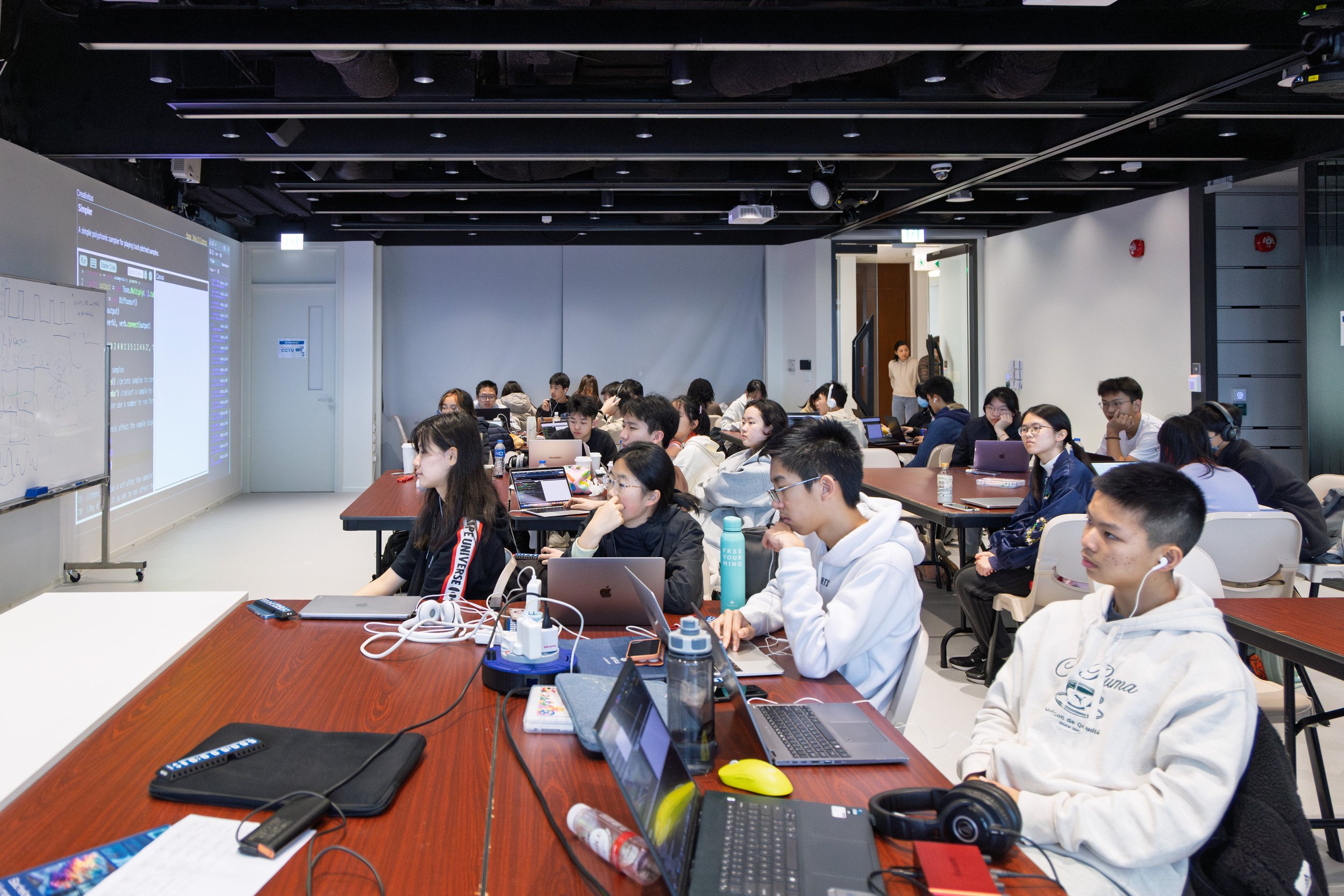
Curriculum
Creativitas connects students with researchers in Music Technology at MIT, offering an immersive experience at the intersection of creativity and innovation. Through a combination of lectures, hands-on workshops, and creative projects, students explore how new technologies are shaping the future of music creation. Our curriculum offers a dynamic blend of technical skills and artistic expression, giving students the opportunity to learn, build, and perform using cutting-edge tools and ideas. Read on to discover more about the curriculum and the knowledge and experience students will gain through the program.
Our Philosophy
Creativitas is built on the idea that music technology draws from computer science, engineering, music composition, and performance. We expose students to current research in music technology, emphasizing how these innovations are applied to music creation. Students work directly with software and hardware developed through ongoing MIT research projects. The learning process is centered around building, coding, and performing, giving students hands-on experience with the research and creative process. Templates and examples are provided to help students get started, while encouraging them to develop and expand their own ideas.
Musical Electronics
Students create their own custom hardware MIDI controllers as part of the electronics curriculum. They learn the basics of electronics, soldering, and key components, working with analog sensors such as potentiometers and buttons. Projects are based on the ESP32 microcontroller, programmed using the Arduino environment. Students design devices that use class-compliant USB MIDI to send data directly to their computers, gaining both engineering and musical skills.
Music Programming
In the music programming section, students program their own music software using a custom browser-based coding environment. They learn programming fundamentals using JavaScript and standard Web tools. The focus is on building core skills while expressing creativity, helping students express their musical ideas through code.
Music Production
Audio samples form a core part of current music production. Students learn how to create their own sample libraries, including the basics of recording and editing audio, applying audio effects, and exporting audio files The curriculum uses Reaper, a powerful and free digital audio workstation, to teach professional recording techniques in an accessible way.
Music Performance
After creating our own instruments and software we explore how musicians use technology in live performance. Students learn techniques from professional musicians, including how to process traditional instruments with computers, how to create dance and pop music using sequencers and synthesizers, and how to use live coding techniques to improvise and collaborate in real time.
Music AI
Students also learn how to use artificial intelligence as a creative tool across disciplines. The focus is on using AI to support research and creation, rather than replacing the creative process. For example, students learn how to use AI as a collaborative coding assistant, helping brainstorm, debug, and refine their code. We also discuss current applications of AI in music—and what might soon be possible as the technology continues to evolve.






